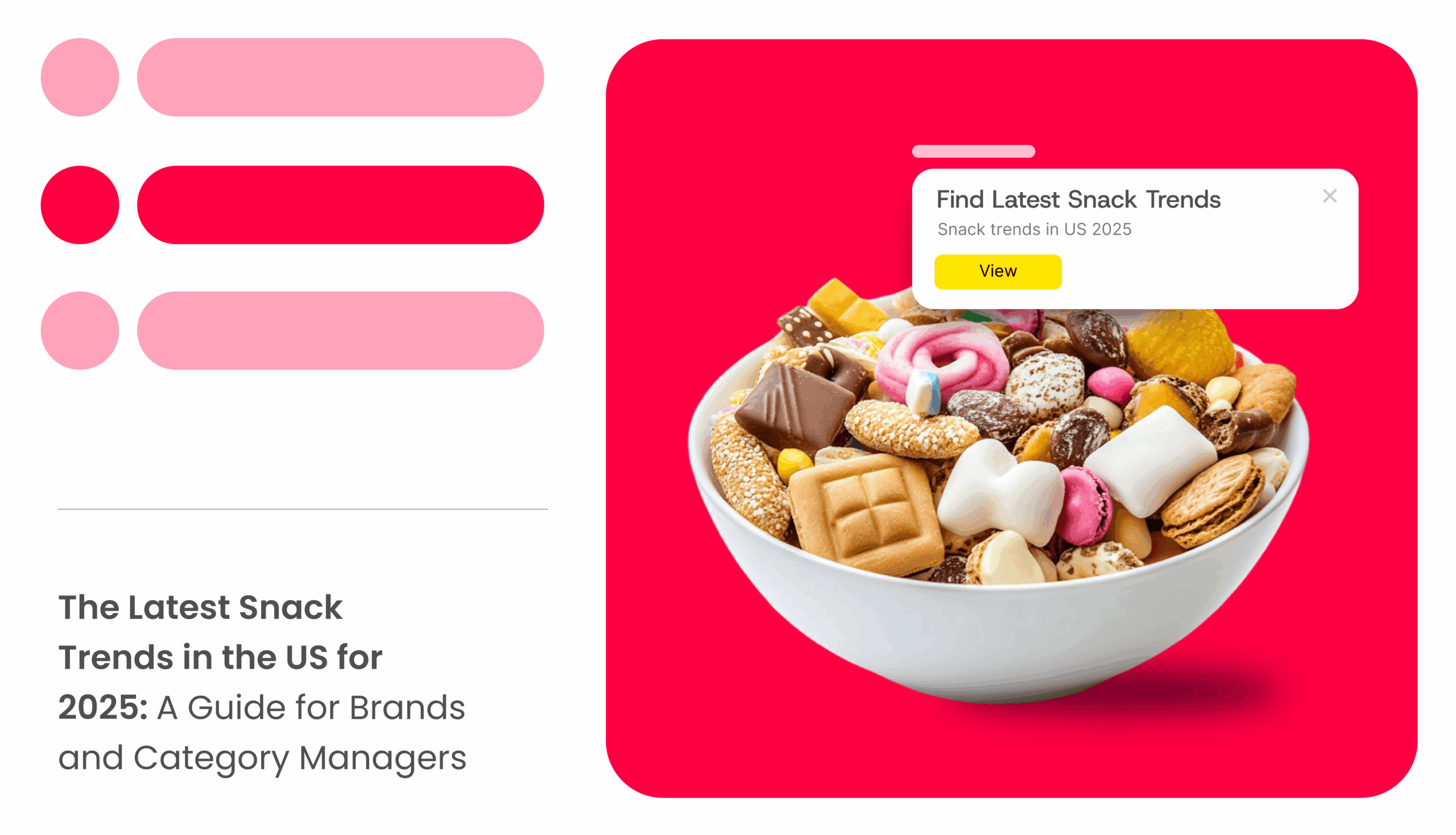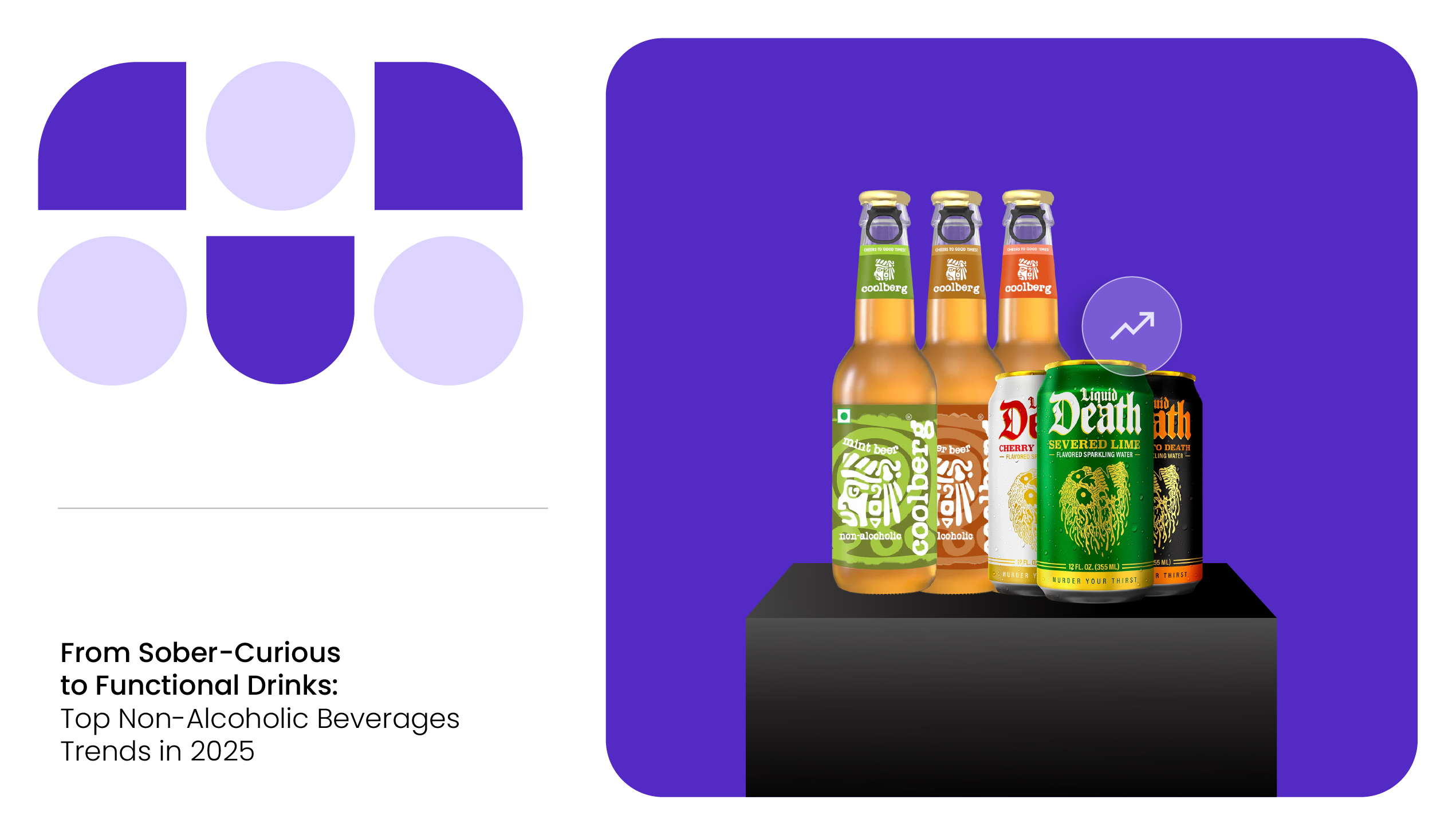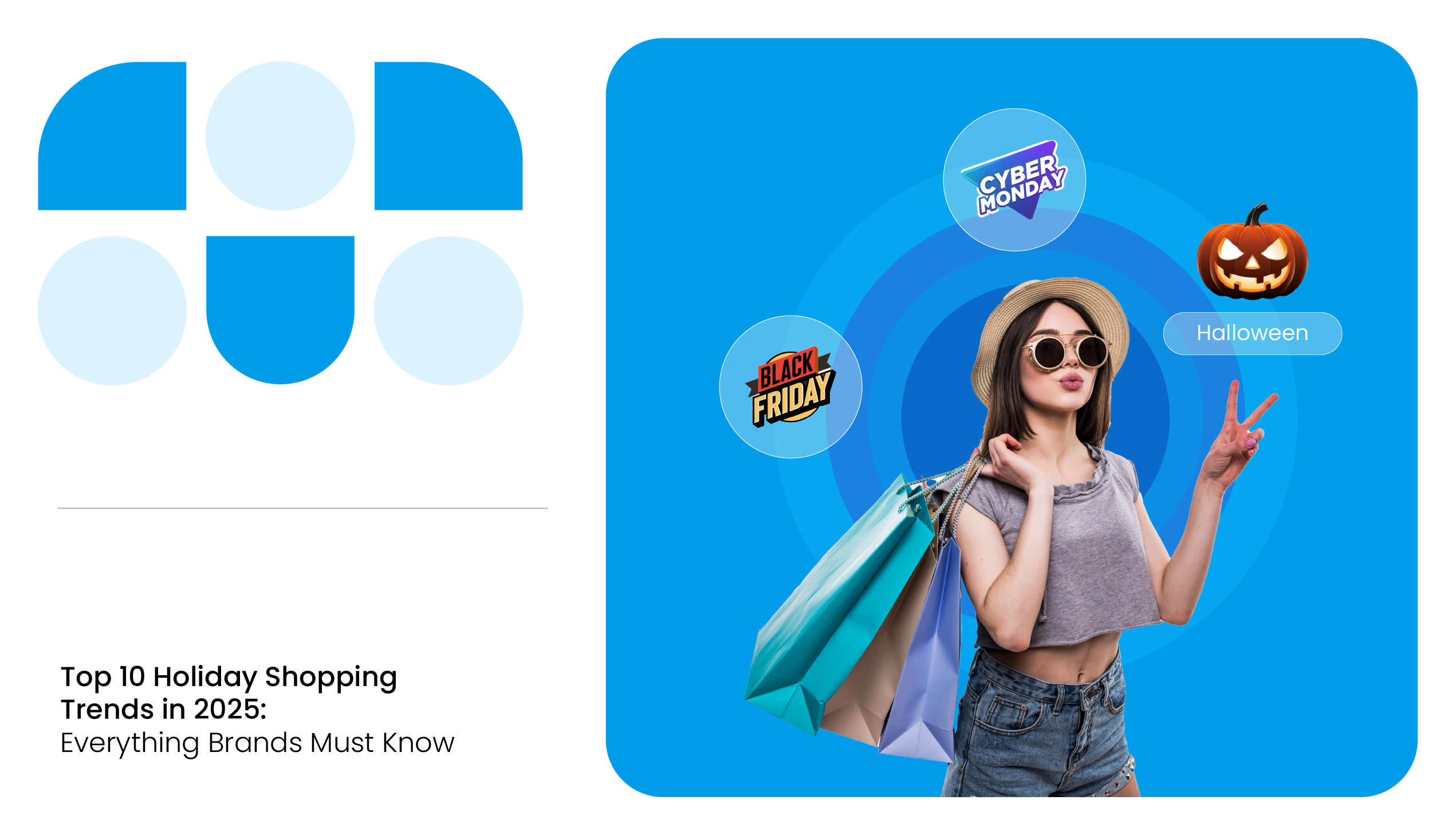The snack industry revenue in the US is valued at over $114 billion, representing a lucrative opportunity for brands, online sellers, and category managers.
As consumers increasingly turn to snacks not just for convenience, but as a key part of their daily eating habits, the competition within this sector is intensifying. The trend toward snacking as a primary eating occasion is only set to grow.
For brands looking to stay ahead in 2026, understanding the latest trends and aligning product strategies with consumer preferences with digital shelf analytics is essential for maintaining relevance and driving sales growth.
READ MORE | Interested in knowing how Gen Z shops on Amazon? Check out our blog Decode How Gen Z Shops on Amazon: Supercharge Your Brand’s Sales Today.
6 Latest Snack Trends in the US
From snacks that promote better health to those that offer on-the-go convenience, understanding these emerging trends is crucial for brands aiming to capture the attention of today’s informed and conscious consumers.

1. Plant-Based and Protein-Rich Snacks
The demand for plant-based snacks has skyrocketed, particularly as a growing number of consumers seek cleaner, healthier, and more environmentally friendly alternatives to traditional snacks.
From chickpea puffs to pea protein chips, snacks made from legumes, grains, and pulses are attractive not only to vegans and vegetarians but also to the broader market looking to reduce their meat consumption and environmental impact.
For category managers, this presents an opportunity to diversify product lines. In addition, snacks that are high in protein are growing rapidly as consumers seek to meet their dietary needs while snacking.
Whether it’s plant-based jerky, protein bars, or roasted nuts, these items cater to the increasing demand for snacks that deliver both satiety and nutrition.
Brands can capitalize on this by emphasizing sustainability in sourcing and production processes, positioning their products as both healthy and ethical choices.
2. Sweet and Smoky Flavors
According to a yougov survey,78% of Americans consider flavor a deciding factor when trying a new snack. Among the flavors, 71% prefer the salty flavor profile, closely followed by the sweet flavor at 70%.
Also, Americans have a strong preference for sweet and smoky flavors, with popular combinations like BBQ and brown sugar or Chipotle and maple.
This trend highlights the shift towards more complex and adventurous flavors in the snack market. Brands that offer innovative flavor experiences are poised to capture the attention of an audience looking for more than just traditional salty or sweet snacks.

In episode 13 of the Digital Shelf Insider podcast, Priyanka explains the unpredictability of consumer behavior. So, creating limited-edition releases or incorporating globally-inspired flavors (like Sriracha, chipotle, or smoked paprika) into your snack products can generate excitement and drive consumer interest. You can listen to the full episode here at:
3. Health-Focused Functional Snacks
The market for functional snacks, those that offer additional health benefits, is expanding rapidly.
According to market.us research, chips or crisps are still the most popular snacks, with 53% of snackers enjoying them weekly. But nuts, seeds, and dried fruits closely follow at 51%, reflecting a shift toward healthier options.
Candy and chocolate bars also capture 51% of weekly snackers, while cookies are enjoyed by 43%. Ice cream remains a favorite for 34% of individuals. This mix of savory, healthy, and sweet snacks reveals that Americans are embracing a balance of indulgence and health-conscious choices in their snacking habits.
This opens up avenues for innovation as a new brand entering the market. Consumers are looking for snacks that support their health goals without sacrificing convenience. Examples include adaptogen-infused energy bars, probiotic-packed yogurt snacks, and low-sugar, high-fiber crackers.
Brands that focus on transparency, highlighting the nutritional value and functional benefits, will likely see strong demand in this space.
4. Sustainability
PepsiCo dominates the US snack food industry with $13.7 billion in revenue, significantly outpacing Kellogg Company ($4.64 billion) and Conagra Brands ($4.63 billion).
This market leadership not only highlights PepsiCo’s strong presence but also underscores the increasing importance of sustainability in the industry, as consumers and companies alike are prioritizing eco-friendly practices alongside growth and profitability.
PepsiCo has teamed up with GreenDotGroup to enhance packaging circularity by incorporating more recycled content into its snack packaging. Furthermore, 89% of its packaging is now designed to be recyclable, compostable, biodegradable, or reusable (RCBR).
This move reflects the growing industry commitment to sustainability, as brands recognize the importance of reducing waste and promoting a circular economy to meet consumer demand for environmentally responsible products.

5. Convenience and Portability
According to research by Innova Market Insights, 15% of US consumers snack while traveling or on the go, with Gen Z and Millennials snacking more than once a day away from home.
While all generations prefer snacking at home, Millennials favor on-the-go snacking as their second choice, and younger consumers, especially Gen Z, show a higher preference for outdoor snacking.
This trend is significant for brands targeting the millennial and Gen Z demographics, who prioritize ease of access without compromising on quality.
Packaging that emphasizes convenience, such as individually wrapped protein bars, ready-to-eat snacks, and portable snack cups, will continue to drive growth in both the physical and online retail channels.
6. Revival of Nostalgic Snacks
A recent study by Talker Research and UserTesting found that two-thirds of Americans would pay an average of 32% more for their favorite childhood products to return to shelves.
The survey of 2,000 US adults revealed that 55% of respondents view retired products, like classic gaming consoles and Crystal Pepsi, as more valuable than current offerings.
With classic treats like Twinkies and Pop-Tarts being the trending snacks in the US, nostalgia plays a decisive role in consumer decision-making, especially when it comes to food.
Creating a sense of emotional connection to your products through nostalgia, combined with innovative twists, can help your brand stand out in an increasingly crowded market.
READ MORE | Want to know more about Walmart’s snack category? Check out Digital Shelf Insights: Walmart Snack Category Analysis.
Conclusion
With consumers becoming more conscious of their health, environmental impact, and flavor preferences, brands and online sellers must stay attuned to the latest trends.
Aligning with consumer demands, whether it’s plant-based snacks, global flavor innovations, or sustainability, will ensure that your brand remains competitive and relevant.
New brands can lead the evolving snack landscape by innovating and offering products that meet today’s consumers’ practical and emotional needs. Digital shelf tools like MetricsCart can assist brands in understanding the overall consumer behavior in the e-commerce market.
Ready To Scale Your Brand and Drive Results? Unlock Your E-Commerce Potential Today!
FAQs
The leading snack trends include functional snacks with added health benefits, plant-based and protein-rich options, nostalgic flavors with a modern twist, and sustainable packaging. Brands should also pay attention to mood-boosting snacks and low-sugar alternatives, as health-conscious consumers continue to dominate the market.
Consumers expect eco-friendly, resealable, and convenient packaging. Brands must address environmental concerns by using recyclable, biodegradable, or compostable materials. Packaging should also clearly display nutritional benefits and align with minimalist or tech-enabled design trends.
To stay competitive, online snack sellers should optimize their DTC (direct-to-consumer) strategies, invest in influencer partnerships, offer subscription models, and personalize experiences using AI. Product listings should highlight trending ingredients and benefits, with SEO-friendly descriptions for visibility.
Gen Z demands authenticity, sustainability, and functionality. They prefer snacks that align with their values, ethically sourced, environmentally friendly, and packed with purpose (like energy or stress relief). Brands must communicate transparency and purpose-driven messaging across all platforms.
Category managers must blend data analytics with trend forecasting to optimize assortments. Key actions include diversifying based on dietary needs, rotating trending SKUs, aligning with macro trends (like sustainability), and offering exclusive online or in-store variants to create channel differentiation.







